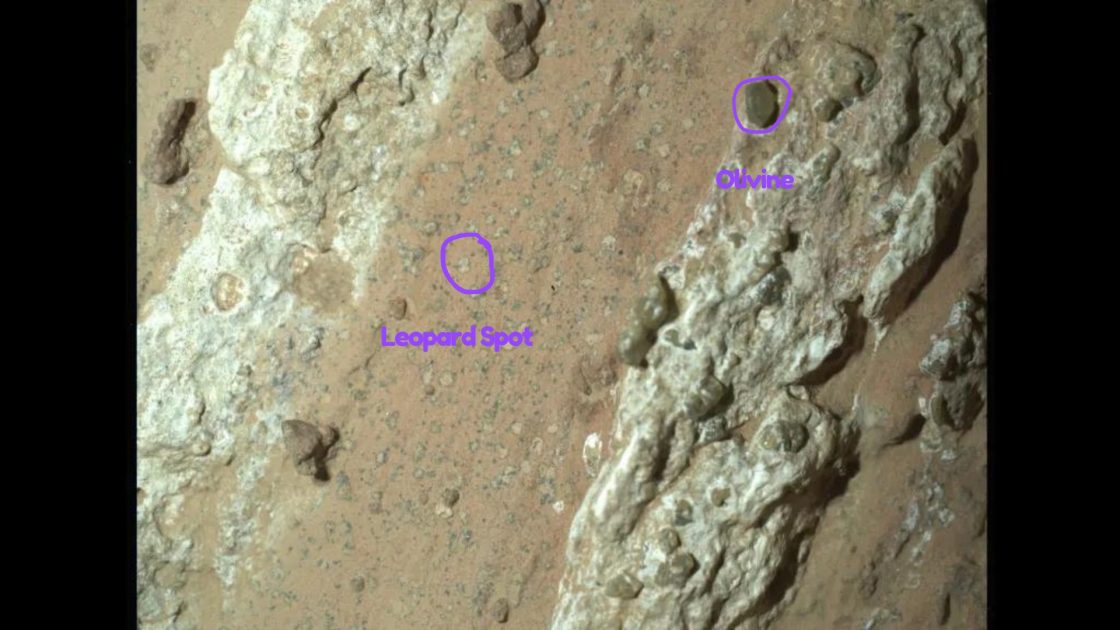Life on Mars? Astrobiologists explain Perseverance’s captivating clues
We know very little about the vastness of the universe, and our Earth-bound perspective often limits our understanding of extraterrestrial phenomena. However, for the first time in Mars exploration history, we have a genuine chance to determine if there’s evidence of ancient life. Recent findings by NASA‘s Perseverance rover have sparked significant excitement within the scientific community, highlighting potential signs of ancient life on Mars.
Perseverance on July 21 discovered a rock sample named Cheyava Falls, which presents intriguing features. The arrow-shaped rock contains organic compounds considered essential building blocks of life. It has calcium sulfate veins suggesting past water flow, a crucial element for life as we know it. Iron phosphate molecules, visible as “leopard spots,” hint at possible microbial fossilization, akin to patterns seen on Earth.

Astrobiologists have underscored the significance of the Cheyava Falls discovery. Ken Farley, the Perseverance project scientist from Caltech in Pasadena, states that Cheyava Falls is the most puzzling, complex, and potentially important rock yet investigated by Perseverance.
“On the one hand,” Farley adds, “we have our first compelling detection of organic material, distinctive colorful spots indicative of chemical reactions that microbial life could use as an energy source, and clear evidence that water—necessary for life—once passed through the rock. On the other hand, we have been unable to determine exactly how the rock formed and to what extent nearby rocks may have heated Cheyava Falls and contributed to these features.”
According to David Flannery, an astrobiologist and member of the Perseverance science team from the Queensland University of Technology in Australia, these spots are a big surprise.
“On Earth, these types of features in rocks are often associated with the fossilized record of microbes living in the subsurface,” Flannery explains.
The presence of organic materials is compelling but not conclusive of life. Such organics can also form through non-biological processes.
One scenario being considered is that Cheyava Falls began as mud containing organic compounds, which later solidified into rock. Subsequently, fluid flowed through fissures, depositing calcium sulfate and forming the large white veins seen today.
Another intriguing aspect of Cheyava Falls is the presence of millimeter-sized olivine crystals within the veins. This mineral, which forms from magma, suggests that high temperatures might have induced an abiotic reaction, potentially explaining the leopard spots.
The Perseverance suite of instruments isn’t designed for definitive detection and confirmation; Earth-based analyses will ultimately be crucial. The rover’s current mission aims solely to collect diverse samples from Jezero Crater’s ancient terrain. As Farley notes, “Scientifically, Perseverance has nothing more to give.” The next steps involve scrutinizing these samples with advanced Earth-based instruments. This detailed analysis will be essential in determining whether Mars once harbored life.
These findings strongly suggest that Mars once had a habitable environment. However, since the rover’s instruments are designed for sample collection rather than definitive life detection, the actual analysis will take place once these samples return to Earth – possibly by the end of this decade – through NASA’s Mars Sample Return program, according to the team.


